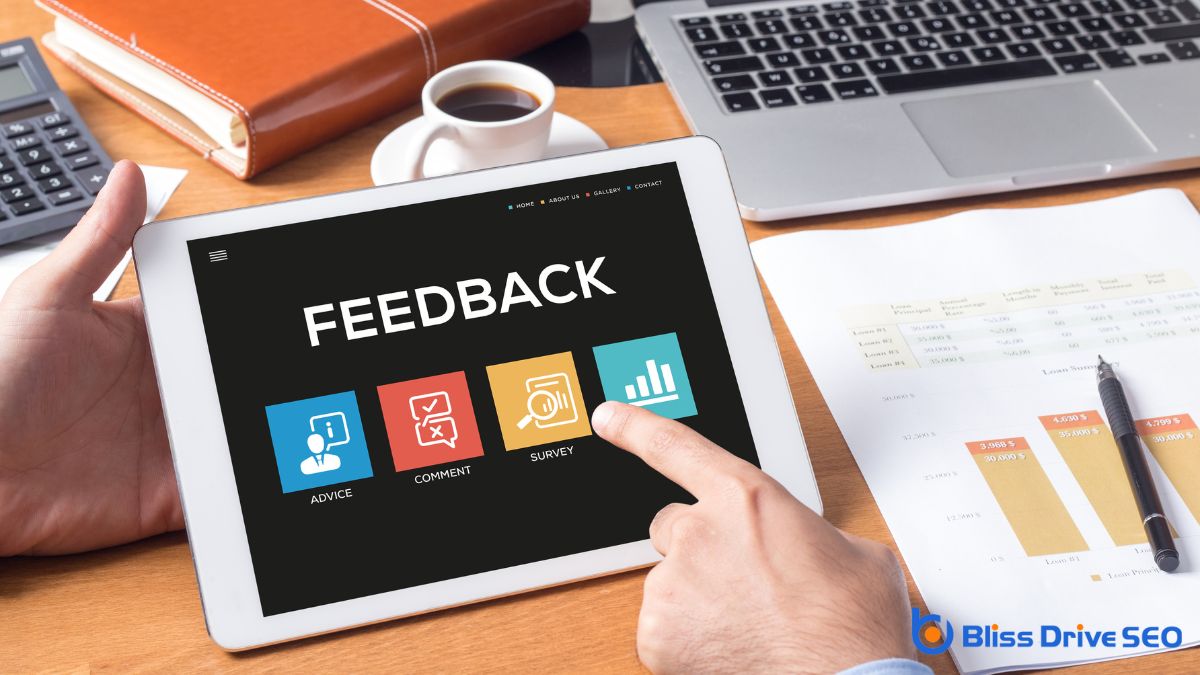Digital Marketing Services
Learn More About Us

To learn Conversion RateThe percentage of visitors who complete a desired action, such as making a purchase or filling out a... Optimization, you need to start by mastering the basics—understanding conversionThe completion of a desired action by a referred user, such as making a purchase or filling out a fo... rates, bounce rates, and how they impact your marketing goals. Use tools like Google AnalyticsA web analytics service offered by Google that tracks and reports website traffic. to analyze user behavior, and don't shy away from A/B testingA method of comparing two versions of a web page or app against each other to determine which one pe... to see what resonates with your audience. Gathering customer feedbackInformation provided by customers about their experience with a product or service, used to improve ... through surveys can inform your approach, but how do you turn this data into actionable insights? Staying abreast of industry trends and strategies is essential, but where should you focus your efforts to truly optimize conversions in an ever-evolving digital landscape?
When you're diving into Conversion Rate Optimization (CRO)The systematic process of increasing the percentage of website visitors who take a desired action, s..., understanding the basics is essential.
You'll find that CRO focuses on improving the percentage of visitors who complete a desired action on your website, such as making a purchase or signing up for a newsletterA regularly distributed email containing news, updates, and content relevant to subscribers..
It's about enhancing user experience and maximizing your site's effectiveness. Start by analyzing your website's current performance to identify areas that might need improvement.
Think about what your audience values and how you can address their needs better. Test different elements like headlines, calls-to-action, and layouts to see what resonates most with visitors.

How do you know which metrics truly matter for Conversion Rate Optimization? Start by focusing on metrics that directly impact your goals.
Conversion Rate itself is essential; it shows the percentage of visitors completing desired actions. Keep an eye on Bounce Rate, indicating how many users leave without interacting further.
Average Session Duration helps you understand user engagementThe level of interaction and involvement users have with social media content. levels. Pay attention to the Click-Through Rate (CTR) for insights into how well your calls-to-action perform.
Don't overlook the Cart Abandonment Rate if you're in e-commerce, as it reveals potential lost sales. Each metric offers valuable insight into user behavior and site performance.
Understanding user behavior is essential for effective Conversion Rate Optimization. You need to dive deep into how users interact with your site.
Start by utilizing tools like Google Analytics to track their journey. Identify which pages they visit frequently and where they drop off. Look for patterns in their navigation and pinpoint any areas that cause friction.
Heatmaps are also valuable as they visually display where users click and scroll on your site. Pay attention to user feedback and session recordings to understand their motivations and frustrations.
When conducting A/B testing, focus on designing effective test variations that clearly highlight differences in user experience.
Analyze the results carefully to understand which version performs better and why.
Once you've identified the winning strategy, implement it to enhance your conversion rate.
Although it might seem intimidating at first, designing effective test variations is a critical step in conducting successful A/B testing.
Start by identifying the elements you want to test—headlines, images, call-to-action buttons, or even layout changes. Clearly define the hypothesis for each variation; this guides your test and helps guarantee it's grounded in logic, not guesswork.
Keep your changes simple and focused. Testing too many elements at once can cloud the results and make it difficult to pinpoint what truly impacts user behavior.
Use tools like visual editors to create your variations without needing deep technical skills.
Before diving into the analysis of your A/B test results, verify that your data collection was accurate and thorough. Confirm your sample size is sufficient to yield meaningful insights.
Once you've confirmed the integrity of your data, examine the performance metricsKey indicators used to measure the effectiveness of affiliate marketing efforts, such as clicks, con... of each variation. Focus on key indicators like conversion rates, bounce rates, and engagementThe interactions that users have with a brand’s content on social media. levels.
Use statistical significance to determine if the observed differences aren't due to chance. Look for patterns and trends that highlight which version performed better.
Remember, subtle changes can sometimes leadA potential customer referred by an affiliate who has shown interest in the product or service but h... to significant improvements. Be objective and rely on data-driven conclusions rather than assumptions.
Kickstart your conversion optimization journey by implementing winning strategies through effective A/B testing. Start by identifying elements on your website that could be improved, such as headlines, images, or call-to-action buttons.
Create two versions: the original (A) and a variation (B) with a single change. Make sure you have a clear goal, like increasing click-through rates or sign-ups.
Next, randomly split your audience into two groups, showing each one version. Monitor their interactions to gather data. Keep your test running long enough to gather significant results, avoiding hasty conclusions.
Once complete, analyze which version performed better. Apply the winning strategy across your site. Remember, A/B testing is an ongoing process, so keep iterating to continually enhance your site's performance.
To optimize your landing pages, focus on making your call-to-action (CTA) clear and compelling.
Confirm that your visual design elements guide visitors smoothly toward your CTA without distractions.
How often have you encountered a landing pageThe web page a user is directed to after clicking on an affiliate link, optimized for conversions. where the call-to-action (CTA) left you confused or uninterested? You're not alone.
A clear, compelling CTA is essential for guiding visitors toward conversion. To improve CTA clarity, consider these steps:
Implement these strategies, and watch your conversion rates soar!
When optimizing landing pages, enhancing visual design elements plays an essential role in capturing your audience's attention and guiding them toward conversion.
Start with a clean, uncluttered layout that highlights key information. Use colors strategically to evoke emotions and direct focus. Confirm your text is readable with clear fonts and proper spacing. High-quality images should support your message, not distract from it.
Visual hierarchyThe arrangement of elements on a webpage in a way that guides users' attention to the most important... is critical — guide your visitors' eyes with size and contrast. Use buttons and icons to emphasize calls to action, making them stand out.
Consistency in design builds trust, so align design elements with your brand identityThe visible elements of a brand, such as color, design, and logo, that identify and distinguish the .... Remember, simplicity is key; too many elements can overwhelm visitors.
Test different designs to see what resonates best with your audience, honing the perfect balance.
Even if your strategy is sound, the right tools can considerably enhance your conversion rate optimization (CRO) efforts.
Leveraging specific tools helps you understand user behavior, test variations, and refine processes. To make the most of CRO tools, consider these essentials:
These tools simplify analysis, helping you enhance your site's performance.
Analyzing user behavior and testing variations with CRO tools lays the foundation for your next step—crafting compelling calls to action (CTAs). Your CTAs should grab attention and encourage users to take the next step.
Start by using action-oriented language like "Get," "Discover," or "Join." Clarity is essential; make sure users know exactly what they'll get by clicking. PersonalizationTailoring content and offers to individual users based on their behavior, preferences, or demographi... can increase engagement, so tailor CTAs to your audience's needs and interests.
Consider color and placement; a standout button or link can drive more clicks. Test different versions to see what resonates.
Keep it concise—users should understand the action without overthinking. A well-crafted CTA is clear, direct, and irresistible, leading to higher conversions and satisfied site visitors.

Listening to your customers can transform your approach to conversion rate optimization. By tapping into their feedback, you gain invaluable insights into what's working and what's not.
To effectively utilize this feedback, consider the following:
Using customer feedback guarantees you're making informed changes that resonate with your audience, ultimately boosting your conversion rates.
Staying ahead in conversion rate optimization means you must keep up with ever-evolving trends. To do this effectively, immerse yourself in industry news and updates. Follow thought leaders and experts on social media who share insights and breakthroughs.
Subscribe to reputable blogs and listen to podcastsAudio content distributed through digital channels, often in series format. focused on conversion strategies. These resources keep you informed about new tools, techniques, and user behavior shifts.
Don't forget to join online communities and forums where professionals exchange ideas and solutions. Engaging in discussions can spark fresh ideas or reveal overlooked details.
Attend webinars and conferences to learn from top experts and network with others in the field. By staying informed, you'll adapt quickly to changes, ensuring your optimization strategies remain effective and relevant.
To master Conversion Rate Optimization, focus on grasping the basics and identifying critical metrics like conversion and bounce rates. Explore user behavior with analytics tools, and don't hesitate to conduct A/B tests to refine your strategies. Optimize your landing pages and craft compelling calls to action to boost engagement. Gather and utilize customer feedback to guide improvements. Finally, stay informed by following industry trends and engaging with online communities. Your proactive efforts will drive significant results.
